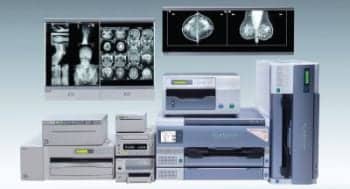While practices will continue to have their mettle tested, 2014 also promises favorable conditions for laying the groundwork for new revenue streams.
By Marianne Matthews
 By now you’ve had plenty of time to reflect on the year gone by. Was 2013 good to you and your practice? Or were you happy to bid it adieu?
By now you’ve had plenty of time to reflect on the year gone by. Was 2013 good to you and your practice? Or were you happy to bid it adieu?
Certainly, some practices are growing, adding new services, and building revenue. But generally speaking, radiology’s been in the doldrums. Reimbursement cuts, consolidation, and all kinds of new technology hurdles. Things just haven’t been easy. As a community, it’s time to amp up your collective energies and embrace both the challenges and opportunities of 2014.
No doubt, it’s going to be another demanding year. The Physician Quality Reporting System (PQRS), for example, just got more arduous for radiologists and group practices. Simply put, to receive an incentive in 2014 it is no longer enough to report on 3 measures; you have to report on 9. What’s more, you can no longer just opt out of the program without ramifications. Failure to participate in PQRS in 2014 not only means you forgo incentive dollars; it means you’ll suffer a 2% financial penalty on all Medicare payments in 2016. (To better prepare for PQRS, don’t miss our article authored by a quality expert online in February at imagingeconomics.com)
ICD-10 poses an additional hurdle for practices in 2014. Yes, this time it looks like it’s really going to happen. Get prepared—or prepare to lose revenue. The fact is, claims that do not use ICD-10 codes will not be processed after the October 1, 2014 implementation deadline. Now is the time to get yourself and your billing staff up to speed.
Finally, radiology will face numerous technology hurdles in 2014. While January marked the beginning of Meaningful Use Stage 2 for eligible providers, experts say about only 14% of radiologists have attested for Meaningful Use so far. This issue of Axis Imaging News is all about helping you tackle technology challenges—with valuable information and advice on the complexities posed by MU2, health information exchanges, and vendor neutral archives.
So what’s the upside for 2014? There appear to be some unique opportunities on the horizon.
When it comes to new revenue potential, 2014 got off to a good start. The United States Preventive Services Task Force (USPSTF) finalized its recommendation for the use of annual low-dose CT screening (LDCT) for former smokers at high-risk for lung cancer. The timing was good, too. Since the official decision from USPSTF happened just before the New Year, all private insurance health plans will be required to cover the LDCT screening by January 2015 due to the Affordable Care Act. What’s more, industry groups are now urging the Centers for Medicare & Medicaid Services (CMS) to follow suit.
The decision is a win for patients, and could save thousands of lives every year. But it is also a real win for providers. LDCT screening offers a potential new revenue stream for private practices and hospitals. Now is the time to prepare. Look for the ACR’s CT lung cancer screening appropriateness criteria, practice guidelines and standards this spring. And, find out how others have already implemented a successful program. Two years ago, Orange Coast Memorial Medical Center pioneered an LDCT lung cancer screening program. To learn more, read our story “Early Advantage.”
In early January, the USPSTF made another exciting move when it included CT colonography in its draft research plan on colorectal cancer screening. Though the review process may take up a good portion of 2014, eventually it could lead to Medicare reimbursement for virtual colonoscopy and potentially without any congressional action needed, according to experts.
Every year brings with it obstacles and opportunities. What are you going to focus on? In 2014, look forward, move forward and flourish.





